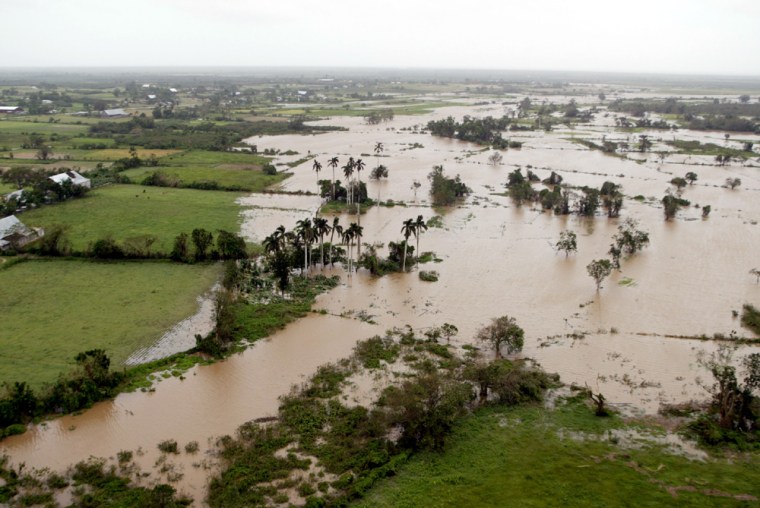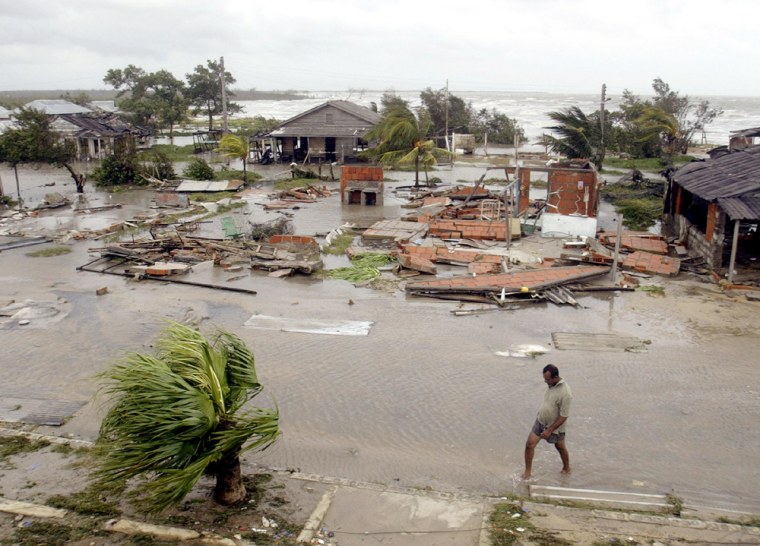Elma Garcia laughed in resignation as she held the cold water tap from her sink — the only thing left from her bathroom in one of few populated areas near the westernmost tip of Cuba that Hurricane Ivan grazed on its way to the Gulf of Mexico.
“We thought that when it was all over there would be nothing left,” Garcia, a 57-year-old retired elementary school teacher, said. “But, well, at least we found something.”
Authorities who organized a helicopter tour of Cortes on Tuesday said it was among the communities most heavily damaged when Ivan passed through with its punishing winds, heavy rains and pounding surf on Monday night before moving up toward New Orleans. Along the island’s southwestern coast, towns such as Cortes were flooded, roofs were ripped off, and homes destroyed.
Although the planting season had not yet begun, dozens of tobacco curing houses in the western province of Pinar del Rio had walls or roofs torn away.

Garcia and her husband were among those evacuated in Cortes, and like many Cubans, opted to stay with neighbors on higher ground. Returning home Tuesday, they found all the bathroom fixtures gone — toilet, bathtub, sink and mirror, all evidently swept away by the sea.
Also gone was the refrigerator. Windows were shattered, parts of the one-story, concrete block home’s wall and roof were torn away.
“Imagine how difficult it will be for a pair of old people like us to start all over again,” said Garcia. Nevertheless, she said she knew the government would help her rebuild, just as it had after past hurricanes.
The helicopter flight over the region showed damage to Maria la Gorda, a popular scuba diving resort near Cuba’s western tip. The roofs of some buildings were torn off and downed palm trees scattered the grounds.
No deaths, injuries reported
Elsewhere, some agricultural crops were flooded. A small bridge and roads were under water.
But no deaths or injuries were reported on the communist-run island and although authorities have not yet provided figures, it was clear damage here was not close to the destruction Ivan caused earlier in the Cayman Islands, Jamaica, Grenada. At least 68 people have died: 15 in Jamaica, 39 in Grenada, five in Venezuela, one in Tobago, one in Barbados, four in the Dominican Republic and three in Haiti.
“It’s still premature to know the damage and loss,” Civil Defense Lt. Angel Macareno said Tuesday night on a state-run television program focusing on the hurricane’s aftermath.
Macareno credited Cuba’s evacuation program for ensuring no one died. He said nearly 1.9 million of the nation’s 11.2 million people — rather than the 1.3 million earlier reported — were evacuated before Ivan struck.
Evacuations here are widespread and mandatory. Civil defense plans are highly developed, with preparedness education programs for the entire population.
“The Cuban way could easily be applied to other countries with similar economic conditions, and even in countries with greater resources that do not manage to protect their population as well as Cuba does,” Salvano Briceno, director of the U.N. International Strategy for Disaster Reduction, said in Geneva.
In 1998, only four people died during Hurricane Georges, while 600 died elsewhere. This year, Hurricane Charley killed four people in Cuba, but 27 in Florida.
